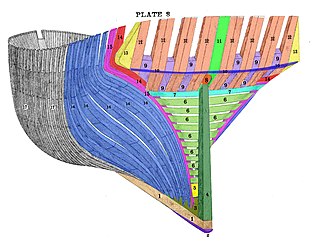Stern
Stern refers to the rear or aft-most part of a ship or boat, situated at the opposite end from the bow or front. The stern lies opposite the direction of travel in a forward-moving vessel and is a critical component in the design and functionality of maritime vessels. The design of the stern has evolved significantly over centuries, influenced by technological advancements, changes in maritime warfare, and the need for more efficient cargo storage and handling. This evolution has led to the development of various stern types, each with its own advantages and applications.
History and Evolution
The design of the stern has undergone considerable changes from the early days of sailing. Initially, ships were built with a simple, flat stern, which evolved into the rounded sterns of the Age of Sail. The introduction of gunpowrey and naval artillery necessitated further changes, leading to the development of the galleon stern in the 16th century, which allowed for better placement of guns and improved ship handling.
In the 19th century, the advent of steam power and the transition from wood to iron and steel in shipbuilding led to the development of the cruiser stern, which offered improved hydrodynamics for better speed and stability. The 20th century saw the introduction of the transom stern, which maximizes the waterline length and is commonly used in modern ship designs.
Types of Sterns
Several types of sterns are recognized in naval architecture, including:
- Transom Stern: Characterized by a flat back, this design is common in modern ships for its simplicity and efficient use of space.
- Cruiser Stern: A more traditional design with a rounded shape, offering better seakeeping qualities and aesthetic appeal.
- Counter Stern: Features an overhanging section above the waterline, common in older ship designs for improved performance and aesthetics.
- Elliptical Stern: Combines elements of the transom and cruiser sterns, with a smooth, rounded shape that improves hydrodynamics and aesthetics.
Functionality
The stern plays a crucial role in the overall functionality and performance of a ship. It houses critical components such as the rudder, propeller, and steering mechanisms, which are essential for navigation and maneuverability. The design of the stern also affects the ship's hydrodynamics, influencing speed, stability, and fuel efficiency.
Cultural and Symbolic Significance
In addition to its functional aspects, the stern has cultural and symbolic significance. It is a traditional location for displaying a ship's name and home port, serving as a point of pride and identity. The stern has also been a favored location for elaborate decorations and figureheads in historical ship designs, reflecting the craftsmanship and aesthetic values of the time.
See Also
| This article is a stub. You can help WikiMD by registering to expand it. |
Transform your life with W8MD's budget GLP-1 injections from $125.
W8MD offers a medical weight loss program to lose weight in Philadelphia. Our physician-supervised medical weight loss provides:
- Most insurances accepted or discounted self-pay rates. We will obtain insurance prior authorizations if needed.
- Generic GLP1 weight loss injections from $125 for the starting dose.
- Also offer prescription weight loss medications including Phentermine, Qsymia, Diethylpropion, Contrave etc.
NYC weight loss doctor appointments
Start your NYC weight loss journey today at our NYC medical weight loss and Philadelphia medical weight loss clinics.
- Call 718-946-5500 to lose weight in NYC or for medical weight loss in Philadelphia 215-676-2334.
- Tags:NYC medical weight loss, Philadelphia lose weight Zepbound NYC, Budget GLP1 weight loss injections, Wegovy Philadelphia, Wegovy NYC, Philadelphia medical weight loss, Brookly weight loss and Wegovy NYC
|
WikiMD's Wellness Encyclopedia |
| Let Food Be Thy Medicine Medicine Thy Food - Hippocrates |
Medical Disclaimer: WikiMD is not a substitute for professional medical advice. The information on WikiMD is provided as an information resource only, may be incorrect, outdated or misleading, and is not to be used or relied on for any diagnostic or treatment purposes. Please consult your health care provider before making any healthcare decisions or for guidance about a specific medical condition. WikiMD expressly disclaims responsibility, and shall have no liability, for any damages, loss, injury, or liability whatsoever suffered as a result of your reliance on the information contained in this site. By visiting this site you agree to the foregoing terms and conditions, which may from time to time be changed or supplemented by WikiMD. If you do not agree to the foregoing terms and conditions, you should not enter or use this site. See full disclaimer.
Credits:Most images are courtesy of Wikimedia commons, and templates, categories Wikipedia, licensed under CC BY SA or similar.
Contributors: Prab R. Tumpati, MD






